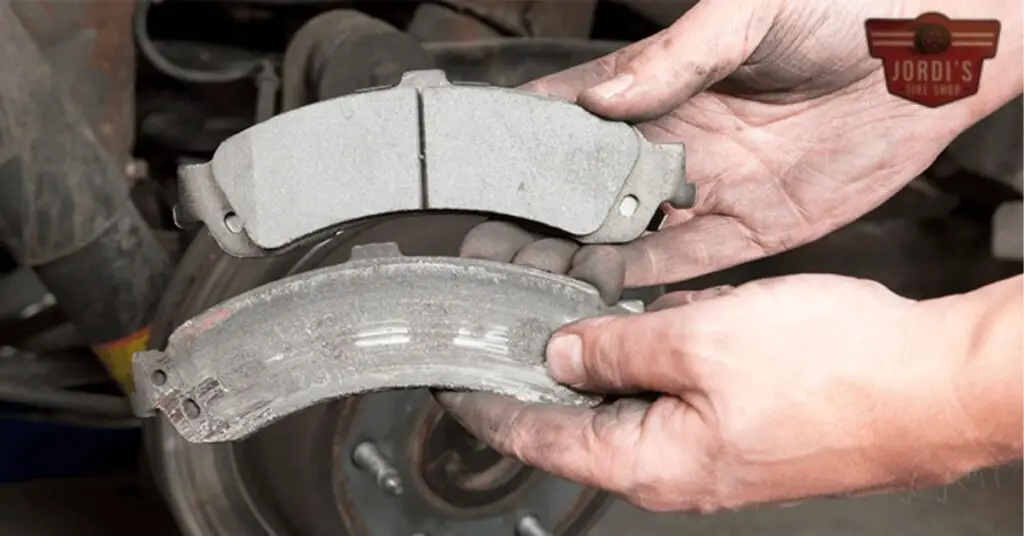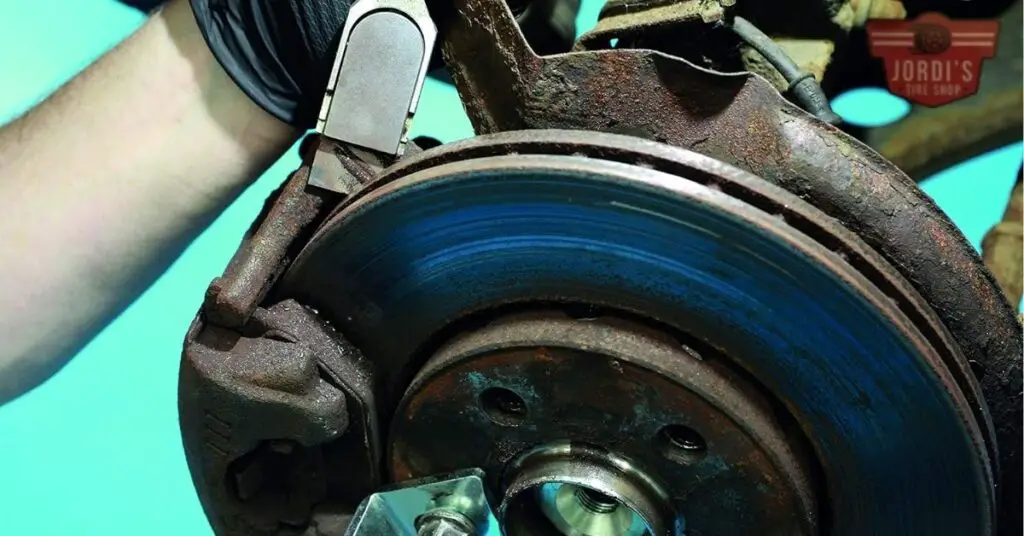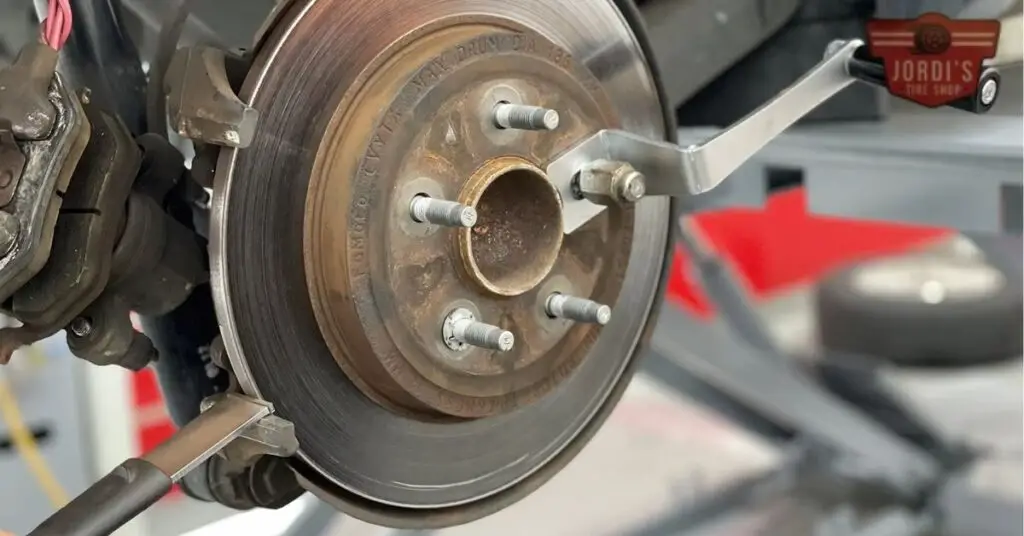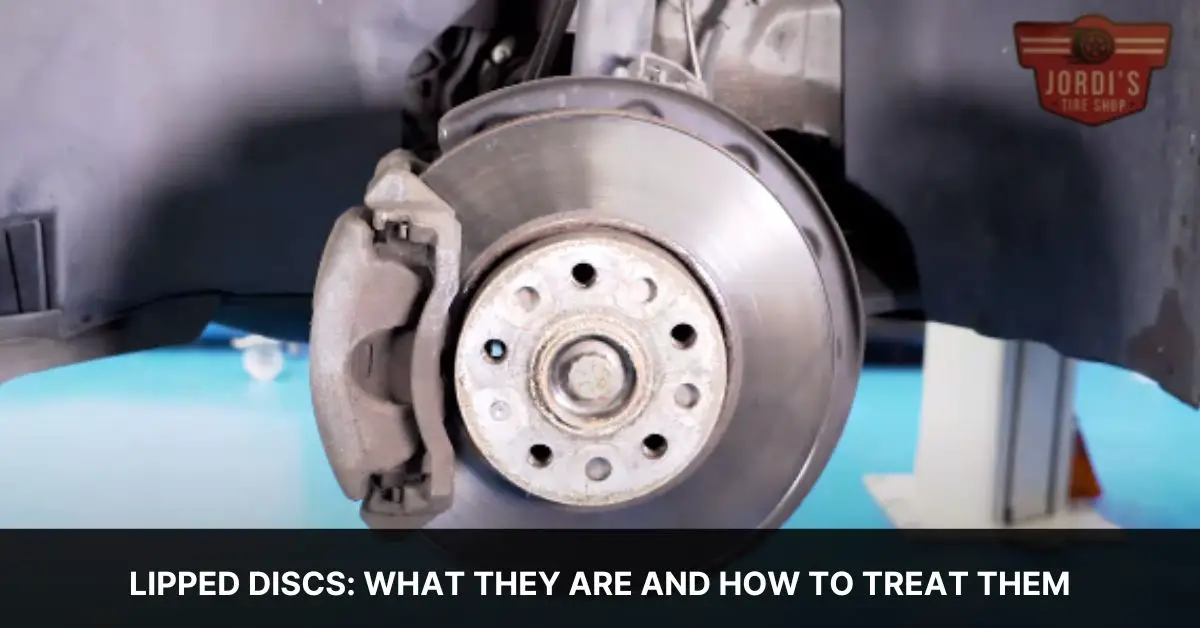Navigating the world of car maintenance can sometimes feel like decoding a mystery, especially when it comes to understanding the nuances of our vehicles’ braking systems. One term that often pops up is “lipped discs,” a common condition that might sound alarming at first but is actually a normal aspect of wear and tear. So, let’s dive into what this really means for our cars and our wallets.
Lipped discs occur when the brake pads don’t cover the entire surface of the disc, leading to uneven wear and a noticeable lip at the edge. It’s a phenomenon that’s as inevitable as the changing seasons, especially for cars that have clocked a few thousand miles. But here’s the kicker: it’s not necessarily a sign of doom. In fact, it’s so common that we’d be more surprised if it didn’t happen after a while.
With a few insights and tips, we’re here to guide you through what lipped discs mean for your vehicle’s health and how to address them without breaking the bank. Whether you’re a seasoned driver or a newbie to the world of car maintenance, understanding this aspect can save you from unnecessary worry and ensure your car continues to run smoothly.
Understanding Lipped Discs

In diving deeper into the subject of lipped discs, it’s essential we grasp the mechanics behind their occurrence. Lipped discs, also known as brake disc wear lips, emerge as a disc-to-pad compatibility transforms over time. This transformation typically results from the brake pads pressing against the discs during braking, causing a gradual removal of material.
A lipped disc manifests as a pronounced edge or “lip” at the outer perimeter of the disc. This condition might raise concerns among drivers, especially when they feel it while changing the wheels or brake pads. However, we’ve learned that a slight lip is a common sign of wear and doesn’t immediately indicate the need for replacement. Yet, understanding the limits is crucial.
The thickness of the lip serves as a makeshift gauge for disc wear. For example, a 1mm lip could signify moderate wear, whereas anything beyond might denote excessive wear. It’s noteworthy that misleading measurements can occur due to debris accumulation, often making the lip appear more pronounced than it actually is. Clearing away this crud can provide a more accurate reading of the disc’s condition.
Furthermore, the role of vehicle specifications can’t be understated. Each vehicle comes with manufacturer-recommended guidelines for minimum disc thickness. Exceeding these wear limits can compromise braking efficiency and safety. Therefore, we advise regularly checking your brake discs against these specifications, particularly if you notice signs of lipping.
Despite the potential for concern, lipped discs are treatable through routine maintenance and inspections. Consulting the owner’s manual or a professional service center can offer peace of mind, guiding when to address lipping through servicing or replacement to maintain optimal braking performance.
Our journey through understanding lipped discs underscores the importance of awareness and preventive care. Recognizing the signs early and adhering to vehicle maintenance recommendations ensures our cars remain safe and reliable companions on the road.
Health and Safety Concerns
When it comes to lipped discs, the health and safety concerns for us as drivers cannot be understated. The presence of a pronounced lip on a braking disc might seem like a minor issue at first glance, but it’s a significant sign that our vehicle’s braking system might not function as efficiently or safely as it should. Primarily, the reduced surface contact between the brake pad and the disc significantly impairs the vehicle’s braking capability. In real-world terms, this means our cars might take longer to come to a stop, a critical factor in preventing accidents.
Moreover, lipped discs can lead to uneven brake pad wear, resulting in inconsistent braking pressure. Imagine, for a moment, we’re driving in wet or icy conditions, and we need to brake suddenly. If one side of the car responds differently from the other, it can lead to skidding or, worse, losing control of the vehicle. It’s a scary thought and one that underscores the importance of addressing lipped discs promptly.
Furthermore, the vibration caused by uneven surfaces can lead to further mechanical issues. Over time, continuous driving with lipped discs can cause strain and eventual wear on other components of the braking system and beyond, such as the suspension and steering systems. The ripple effect of neglecting such a seemingly small issue can lead to costly repairs down the line.
Ensuring our vehicle’s braking system is in top condition isn’t just about avoiding repair bills; it’s fundamentally about keeping us and other road users safe. Regular inspections and maintenance by a professional service center are paramount. They can accurately measure disc thickness, assess the extent of the wear, and advise on the best course of action. Remember, when it comes to safety, cutting corners is never an option.
Maintenance and Care

In light of the concerns surrounding lipped discs, we find it paramount to emphasize the role of diligent maintenance and care. Consistent monitoring and upkeep not only extend the lifespan of your vehicle’s braking system but also ensure optimal safety and performance.
First and foremost, regular inspections by a qualified professional are key. These should occur at least twice a year or more frequently if you cover a lot of miles. A mechanic can assess the wear on your brake discs and pads, identifying lipping at its earliest stages before it becomes a significant safety concern.
Second, pairing new brake pads with old, worn discs is not advisable. When replacing brake pads, it’s often best practice to inspect the discs for any signs of lipping or wear. If present, replacing the discs alongside the pads ensures a flat and smooth surface for the pads to contact, promoting even wear and optimal braking performance.
Furthermore, addressing corrosion promptly plays a crucial role in preventing lipped discs. Corrosion can exacerbate wear, leading to the development of a lip on the disc’s edge. Regular cleaning and rust prevention treatments can mitigate this risk, especially in climates where roads are salted in winter.
Lastly, driving habits significantly impact the condition of your braking system. Avoiding aggressive braking and not overloading your vehicle can reduce the rate at which your brakes wear down. Gentle, controlled braking conserves the integrity of both brake pads and discs, preventing premature wear.
Following these steps, we can almost guarantee a longer-lasting, safer braking system. It’s all about taking preemptive action rather than waiting for problems to arise. In doing so, we not only protect our personal safety but also avoid the higher costs associated with correcting preventable issues. Regular maintenance is, without doubt, the best care we can provide for our vehicles, ensuring they remain reliable companions on the road.
When to Seek Help
Understanding when to seek help for lipped discs is crucial in maintaining not only the efficiency of your car’s braking system but also ensuring safety on the road. Given the potential dangers associated with lipped discs, such as skidding and loss of control, identifying the right time to consult a professional becomes paramount. From our experience, several signs indicate it’s time to get your brake discs inspected by a professional.
First, listen for unusual sounds. If you hear grinding or squealing noises when applying the brakes, this often signals that the brake pads are worn down and may have caused damage to the discs. Lipped discs can exacerbate these sounds, indicating uneven wear and potential brake failure.
Second, pay attention to changes in braking performance. If your car takes longer to stop than usual or the brake pedal feels spongy, these could be signs that the lipped discs are affecting your vehicle’s ability to brake effectively.
Third, visual inspections can reveal a lot about the state of your brake discs. If you notice visible grooves or lips on the edge of the disc, it’s a clear sign that the discs have worn down and need professional evaluation. Regular checks will help catch these issues early, before they become hazardous.
Lastly, if your vehicle has recently been subjected to harsh driving conditions, such as frequent mountain driving or heavy towing, these activities can accelerate wear and tear on your brakes, making it wise to have them checked sooner rather than later.
At the end of the day, maintaining your vehicle’s safety is our top priority. Regular maintenance by professionals can prevent lipped discs and other brake system issues from developing into dangerous or expensive problems. So, if you notice any of these signs, it’s time to reach out for professional help. Ensuring your brakes are in top condition is paramount for safe driving and can save you from costly repairs down the line.
Warranty and Replacement

Addressing the concerns surrounding lipped discs necessitates a closer examination of warranty and replacement policies that may offer relief to vehicle owners. When it comes to brake components, manufacturers often provide a warranty that covers defects in materials and workmanship for a specified period. However, it’s crucial to understand that wear and tear items, like brake discs, typically fall outside of these warranties due to their consumable nature.
In the event lipped discs are identified during routine maintenance or inspection, we recommend reviewing your vehicle’s warranty documents. Some manufacturers might offer limited warranties on brake discs under certain conditions. For instance, if lipped discs are deemed a manufacturing defect rather than a result of normal wear and tear, there could be a case for replacement under warranty.
Should warranty coverage not apply, replacement becomes the next viable solution. Our advice leans towards investing in new discs rather than opting for secondhand parts. New discs ensure optimal performance and safety, a priority for us all. Furthermore, the cost of new brake discs has become more reasonable over the years, making them a cost-effective solution for most vehicle owners.
When considering replacements, pairing new brake pads with new discs is advisable. This not only promotes uniform wear and optimal braking efficiency but also prevents the recurrence of lipped discs. We understand the desire to keep costs down, which is why we emphasize seeking professional advice. A certified mechanic can offer tailored advice on the best course of action for your specific situation, potentially saving you money in the long run by avoiding repeated issues and ensuring your vehicle’s braking system is in top condition.
Actively exploring warranty options and considering new replacement parts stand out as practical steps for addressing the challenge of lipped discs. Prioritizing safety and vehicle performance, while being mindful of costs, guides our recommendations in navigating these decisions.
Conclusion
We’ve explored the ins and outs of lipped discs and their impact on our cars. It’s clear that taking care of our braking system isn’t just about maintenance—it’s about ensuring our safety on the road. Remember, investing in new brake components and pairing them correctly can save us from future headaches. And while it might be tempting to cut corners, seeking professional advice and opting for quality parts will always be the smarter choice. Let’s keep our vehicles in top shape and our drives safe by staying proactive about our brake health.
Frequently Asked Questions

Can worn brake pads damage discs?
Yes, worn brake pads can damage brake discs. When brake pads wear down to the metal, they can grind against the discs during braking, causing damage and potentially leading to a need for disc replacement.
How long do discs usually last?
Brake discs typically last more than 50,000 miles, but their lifespan can be extended to around 80,000 miles with proper maintenance and sensible driving habits.
How do you remove lip from brake discs?
Removing the lip from brake discs usually requires a mechanical process like using a disc cutter to smooth out the edges. This process should ideally be handled by a professional mechanic.
Can you drive with worn brake discs?
Driving with worn brake discs is unsafe and not recommended. Worn discs can significantly impair your vehicle’s braking efficiency, posing a risk to safety.
Do discs ever heal?
While the symptoms of a herniated disc often improve on their own, whether the disc fully heals is uncertain. Some discs can become asymptomatic without actually healing completely.

